IELTS writing task 1 Process Writing
Understanding
the Task
- Task Type:
You may be given a natural process (e.g., water cycle,
photosynthesis) or a man-made process (e.g., making cement,
recycling plastic).
- Objective:
Describe all stages of the process in a logical sequence.
- Word Count:
Minimum 150 words.
- Time Limit:
Spend about 20 minutes on this task.
Structure of Your Answer
1.
Introduction (1 sentence)
- Paraphrase the task question.
- Use synonyms and different sentence structures.
Example:
The diagram illustrates how coffee
is produced and packaged for sale.
2.
Overview (1–2 sentences)
- Give a general summary of the whole process.
- Mention how many stages there are and highlight the
first and last stages.
- Avoid details or specific data here.
Example:
Overall, the process consists of 11
stages, starting from picking coffee beans and ending with packaging them for
sale.
3.
Body Paragraphs
Divide the process logically:
- Group 4–5 stages per paragraph.
- Use linking devices and sequence markers
to show the flow.
Useful Sequence Words:
- First / Firstly
- Then / After that / Next
- Subsequently
- Meanwhile
- Finally / In the final stage
Language
Tips
Use
Passive Voice (especially for man-made processes)
- “The seeds are planted…”
- “The mixture is heated…”
Use
Present Simple Tense
- The diagram shows…
- The process begins with…
- The water evaporates…
Use
Process Verbs
- Begin, start, go through, proceed, continue, pass
through, transform, filter, heat, cool, assemble, collect, store, etc.
Use
Prepositions and Connectors
- Into, through, from, to, until, before, after, during
- In the next step,
at the same time, as a result, this leads to
Additional
Tips
1.
Do not
include personal opinions or
assumptions.
2.
Avoid
repetition of words; use synonyms where
possible.
3.
Identify
and describe every stage – no skipping!
4.
If it's a
cycle, mention that it is circular and
continuous.
5.
Check
grammar and spelling in the last 2 minutes.
Sample
Overview Sentence Patterns
- The diagram illustrates the steps involved in…
- The process begins with… and ends with…
- Overall, the process consists of X stages, starting
with… and culminating in…
You should spend about 20 minutes on this
task.
The diagram below shows the stages and
equipment used in the cement-making process, and how cement is used to produce
concrete for building purposes.
Summarise the information by selecting and reporting the main
features and make comparisons where relevant.
The given diagram shows the process of
cement production and then how this cement is used for concrete production.
As is observed from the graph, cement
production involves some complex processes and concrete production is done
using the water, cement and sand in a concrete mixer.
The first diagram depicts that, to produce
cement first the limestone and clay are crushed and the produced powder from
this is passed through a mixer. The power is then passed via a rotating heater
where heat is supplied constantly and this process creates the raw cement
materials which are passed on a grinder machine to finally produce the cement.
The cement is then packed and marketed for sale.
The second diagram presents how the concrete
is produced for housing and building work. In the first stage, 15% cement, 10%
water, 25% sand and 50% small stones are mixed in a concrete mixer machine and
the machine rotates fast to have the ingredients mixed together to create the
concrete.
(165 words)
Sample 2
You should spend about 20 minutes on this
task.
The
diagram below show how coffee is produced and prepared for sale in supermarket
and shops.
Summarise the information by selecting and reporting the main
features and make comparisons where relevant.
You should write 150 words.
The picture illustrates the process of
coffee production and preparation for selling in supermarkets and shops.
Overall, producing coffee involves 11 steps
before it can be put on the market. The process starts with collecting the
coffee beans and culminates with filling up jars with coffee.
To begin with, the coffee beans are
harvested on the farm and dried in the sun to remove water. After that, the
beans are roasted and cooled quickly. Then, they are converted into powder by
being ground a grinding machine and mix with hot water to become a mixture,
which is strained in the next step.
At the next stage, the strained mixture
becomes frozen liquid at a low temperature. Subsequently, it passes through a
grinder the second time, which is followed by being dried in a vacuum so that
the water turns into moisture. Finally, the coffee powder is packed into jars
and it is ready to be delivered to shops.
(158 words)
Sample 3
The diagram below shows how the
Australian Bureau of Meteorology collects up-to-the-minute information on the
weather in order to produce reliable forecasts.
Summarize
the information by selecting and reporting the main features and make
comparisons where relevant.
You should write at least 150 words.
The illustration provides information about
the process of collecting current and reliable weather forecasts and then
broadcasting this to mass people which are conducted by the Australian Bureau
of Meteorology.
As can be seen, this process needs some
equipment to gather news forecasts and three main sources, such as satellite,
radar, and the drifting buoy is used for collecting weather information.
To begin with, the satellite is used to
capture images of Australian weather from the outside of the planet. Meanwhile,
radar can give screen pictures while a drifting buoy which is placed on the sea
reveals a synoptic chart of the Australian climate.
Subsequently, all of the information is
analysed to know the real weather condition in Australia. After that, these
data are put on the computer to prepare the report for the public broadcast.
People will know the weather forecasts in Australia through various media, in
particular, TV newsreader, radio, and recorded announcement.
(155 words)
Sample 4
The diagrams
below show the life cycle of the silkworm and the stages in the production of
silk cloth.
Summarise
the information by selecting and reporting the main features, and make
comparisons where relevant.
» Write at least 150 words.
The diagrams illustrate the life cycle
process of the silkworm as well as various steps in making of silk cloth.
Overall, the life cycle of silkworm has four major stages
which begin with eggs and end with cocoon. Similarly, there are four main steps
in the production of silk cloth commencing with boiling into the water and
ending with dying process.
Initially, the life cycle of silkworms starts with eggs which are laid by bees
on the mulberry leaves. After this stage of the cycle, it becomes silkworm
larva on mulberry leaves. It is then developed into silk thread within 4 to 6
weeks. After the last main stage of the life cycle, it is transformed into
cocoons, which is necessary to make a silk cloth.
In the production of silk cloths, selected cocoons are boiled into the water.
Unwinding is in the second process in which 300 to 900 mm threads are produced.
Eventually, it is then twisted which is helpful for making waves. Finally, the
wave is ready for dye process in any colour for the final production of silk
clothes.
(183 words)
The diagrams below show the
life cycle of a species of large fish called the salmon.
Summarise
the information by selecting and reporting the main features, and make
comparisons where relevant.
Write at
least 150 words.
The given diagrams explain the life cycle
and respective sizes of a large fish species called the Salmon.
As it can be clearly seen from the figure
that the salmon develops in three major stages from a Fry to an adult Salmon.
At each stage, the size of the fish and their habitats change.
Salmon eggs are laid in the upper river,
which is slow-moving, among small stones and reeds. After 5 to 6 months, they
are hatched into the first stage of Salmon fish ‘Fry’. It is around 3 to 8 cm
in length. They migrate to the fast-moving lower river. In about four years,
they develop into the next stage called smolt, which then migrate to the sea.
The smolt, which is 12 to 15 cm in length,
matures into an adult Salmon of 70 to 76 cm in almost five years. Then
adult salmon travels back to the upper river to lay eggs.
(156 words)
Sample 6
The diagram illustrates how wasted bottles made from glass
are recycled and delivered back to the store.
Overall, there are 3 main stages in the whole glass bottle
recycling process, beginning with collecting wasted jars and finishing with the
delivery of the products for sale.
In the first stage, wasted glass jars are deposited at
collection points where they are loaded on trucks to transport to a glass
treatment plant. In the second stage, several steps are taken in order to
transform wasted glass to recycled products. Firstly, bottles are washed under
high-pressure water to remove any impurities, following that they are
classified into 3 categories based on the colour, namely clear, green and brown
glass. They are then transferred to glass factories in which they are crushed
into debris. In the next step, those pieces are melted in a glass-melting
furnace at around 600 to 800 degree Celsius. After that, recycled liquid glass
together with new liquid glass are moulded into new products.
In the last stage, the glass is used to bottle different
products, and then sent back to the supermarket ready for sale.
(186 words)
Sample 7
You should spend about 20 minutes
on this task.
The diagram below shows the process for recycling plastic
bottles.
Summarise the information by selecting and reporting the main
features, and make comparisons where relevant.
Write at least 150 words.
The diagram illustrates the plastic bottle recycling process.
Overall, the recycling of plastic bottles has nine steps
starting from placing the bottles in the designated bins to the producing
end-consumer products like bags, t-shirts and pencils - which would be recycled
again once they are used.
As the illustration depicts, the first step of recycling
plastic bottles begins with people placing them in specified recycle bins.
Next, those bottles are collected and transported to recycling centres where
workers sort out recyclable plastic bottles from others. Selected bottles are
then compressed and converted into large blocks which are, afterwards, sent
through crushing machines. The crushing process produces small pieces which are
then washed before feeding them into a machine to make plastic pellets.
In the next step, heat is applied to the pellets which
ultimately form the raw materials for producing different plastic-made consumer
goods. Next, the raw materials are refined and rolled which is used to
manufacture end products like t-shirts, pens, plastic bottles, containers, and
so on. To reiterate the recycling process, the end products are placed in the
designated bins once they get torn out or used. It keeps the plastic recycling
process keep going.
Sample 8
The diagram shows the process by which milk and related products
are produced.
Summarise the information by selecting and reporting the main
features.
Write at least 150 words.
The provided illustration below
demonstrates how milk is processed and produced for retail purposes.
Overall, the process begins with cows grazing and ends with milk
and dairy produce being sold in shops. It is a 9 stage, linear, man-made
process.
First of all, cows are allowed to graze on agricultural land so
that they can produce milk. They are then milked twice a day by machinery and
the milk is stored in a refrigerator to ensure that it stays fresh. A milk
tanker then collects the milk and delivers the milk to a dairy where it can be
processed further.
After this the dairy converts the milk into either pasteurized and
packaged milk so that it is safe and convenient for customers to use, or it is
turned into other dairy products that can then be sold. Finally, the products
are sent to supermarkets and shops in order to be sold to the public.

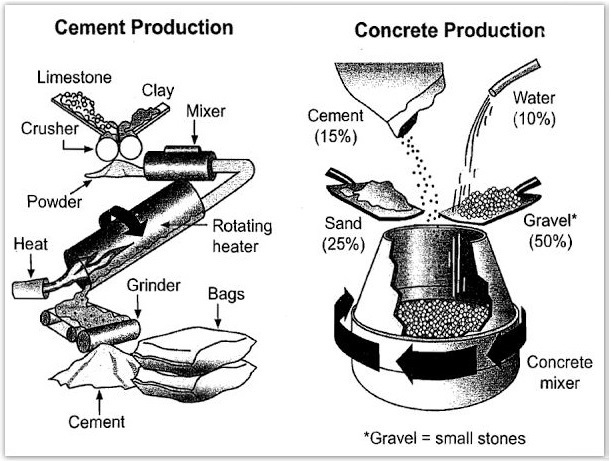
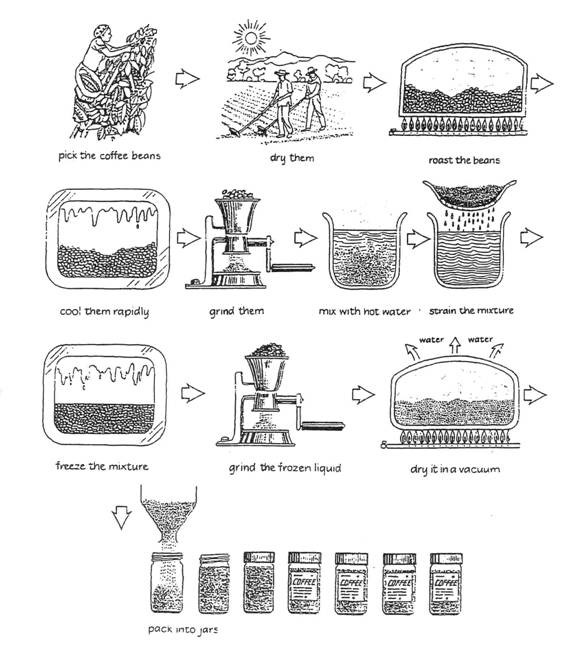
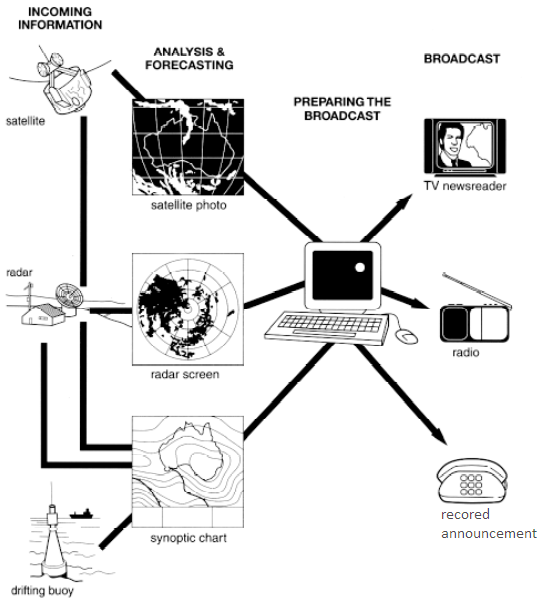
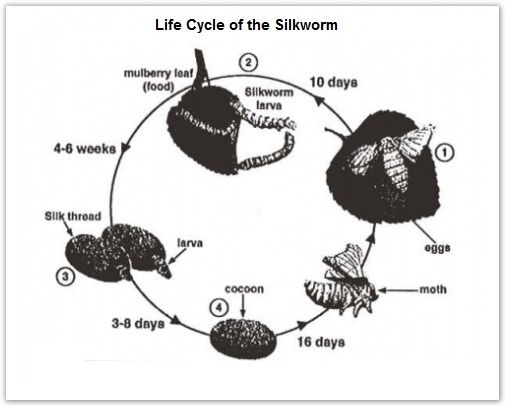
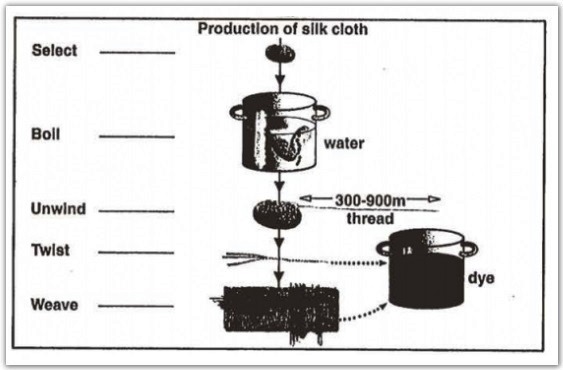


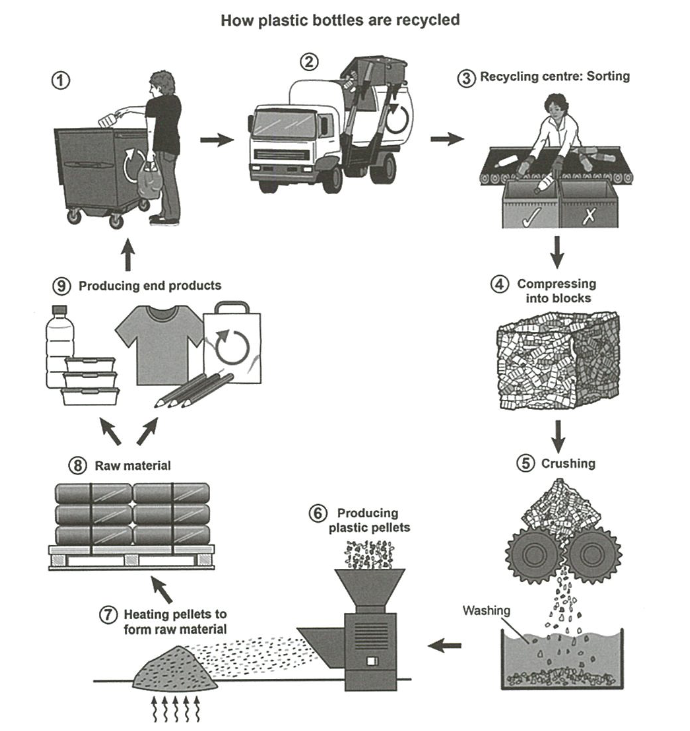
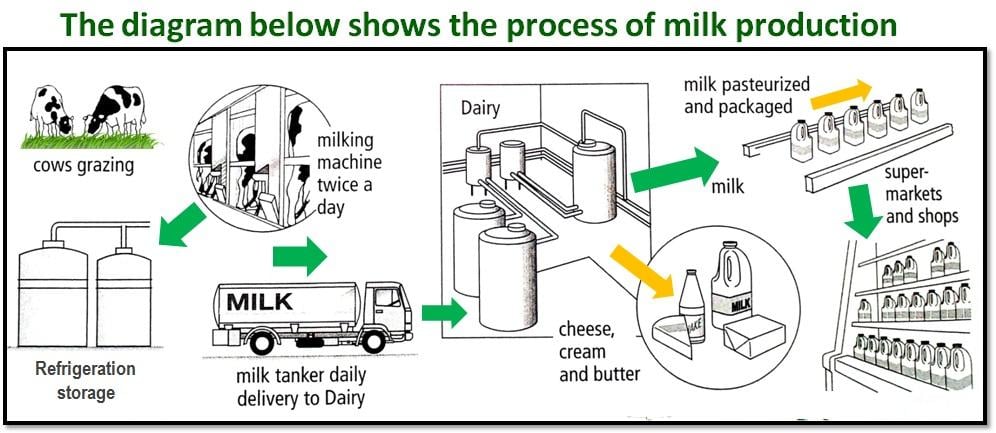

.png)

No comments:
Post a Comment